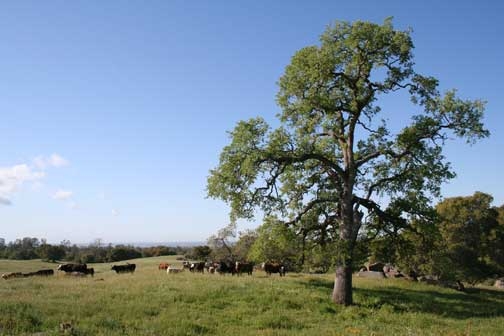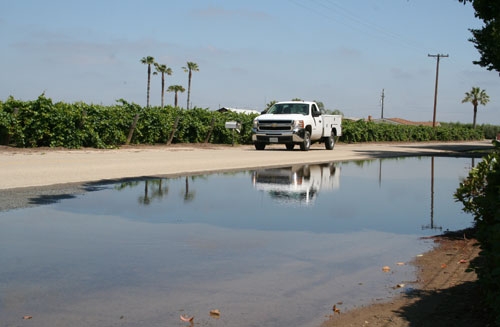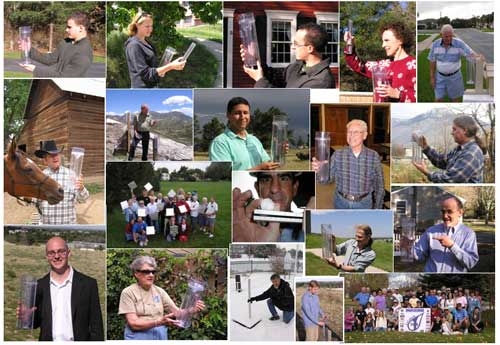Posts Tagged: weather
California's fall weather is getting rangeland grasses growing
Germination occurred as a result of the season's first rains in October, but it didn't hold in some pastures because of the lull in precipitation, Davy said.
"This ought to get it up and going," Davy said of the rain that fell before Thanksgiving. "It usually takes between half and 1 inch in a week to get it sparked up and going, and we have definitely had that."
California farmers efficient, study finds
Tim Hearden, Capital Press
A Fresno State Center for Irrigation Technology research report says California farmers are more efficient in managing their water supplies than they're sometimes given credit for. As a result, large volumes of "new water" cannot be developed through agricultural water conservation.
The Fresno State irrigation experts' yearlong study aimed to update a 1982 University of California Cooperative Extension report, "Agricultural Water Conservation in California with Emphasis on the San Joaquin Valley." The new study says the 1982 report correctly framed the potential for agricultural water-use efficiency.
Agriculture welcomes summer
Temperatures across California's Central Valley pushed past the century mark in conjunction with the official arrival of summer yesterday. The warming weather is, for the most part, being welcomed by the agriculture industry, though some wished the warm-up hadn't been so sudden, Capital Press reported.
CP reporter Tim Hearden spoke with UC Cooperative Extension farm advisor Rick Buchner about almond, walnut and prune orchards, which he said are holding up well, although gradual warming would have been better.
"We haven't found a whole lot of problems at this point," Buchner was quoted. "We've seen some pretty good prune and walnut crops."
The Capital Press story summarized USDA's National Agriculture Statistics Service National Crop Weather Report. It said:
- Alfalfa growers have been getting cuttings throughout the state in June
- Sunflower seed, corn and bean planting continued
- Blueberry harvest has gone into full swing
- Strawberry picking continues, while strawberry nursery planting is about finished
- Carrots have been harvested in Kern County
- Onions and garlic in Fresno County are maturing to harvest
- Processing tomatoes are starting to grow after the cool weather held them back
- Non-irrigated pasture and rangeland are in good condition
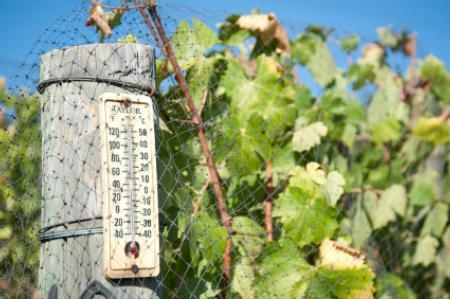
The cool spring slowed grape growth and caused mildew and fungus problems.
Atypical rainstorm pounds the central San Joaquin Valley
Another chapter in California's unusual 2011 weather saga was added over the weekend when clouds dumped 1.64 inches of rain in Fresno, seven times the average for the month June, according to the Fresno Bee.
The story, written by Mark Grossi, said that the wet weather increases the potential for mold and mildew problems in vineyards. Growers may be applying additional treatments of mildew-fighting chemicals.
"Rain during this stage of the growing season is really unwelcome," the article quoted Matthew Fidelibus, UC Cooperative Extension viticulture specialist based at the Kearney Agricultural Research and Extension Center.
For farmers of other crops, the rain storm is a break from having to irrigate fields for a few days, agricultural officials told Grossi.
According to the Weather Channel website, the usual dry and warm weather pattern for June will soon resume. By Thursday, the valley high temperature is forecast at 90 degrees, about average for this time of year.
Cool spring weather slows down crop growth
UC Cooperative Extension farm advisor Manuel Jimenez, a lifelong San Joaquin Valley resident, said he can't recall another spring as cool as 2011's, according to the Porterville Recorder.
“It actually has slowed down everything,” he was quoted in the story. Crops are growing "at a turtle's pace."
Cotton and corn already suffered delays in planting because of wet weather. Backyard gardeners are seeing a slowdown in the development of tomatoes, squash and peppers. But cool springtime weather isn't all bad news.
For crops like blueberries and strawberries, the cooler weather is good. Porterville area strawberry grower Nai Saechao said the cooler weather has allowed for an extended, higher quality crop.
“The plants keep producing when it’s cold,” the grower was quoted.
The story said mild weather is expected to continue in the foreseeable future. Today and Friday temperatures will top out in the mid 70s and over the weekend another low-pressure system will keep temperatures in the low 70s, with a 20 percent chance of rain.
Though warmer days will help most crops, Jimenez said a sudden heat wave is not what farmers have in mind. That would ripen a lot of fruit all at once, flooding the market and bringing down prices.
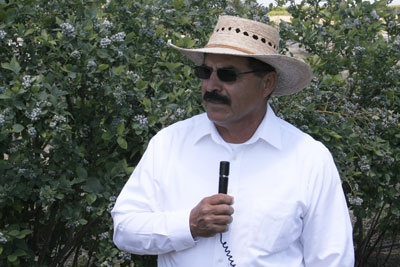
Manuel Jimenez speaks at a recent blueberry field day.
Volunteer weather observation helps scientists track storms
Sponsored in part by the National Oceanic and Atmospheric Administration (NOAA) and the National Science Foundation (NSF), the Community Collaborative Rain, Hail and Snow Network (CoCoRaHS) is a grassroots volunteer network of backyard weather observers.
With a presence in every state in the country, volunteers from all backgrounds work together to measure and map precipitation (rain, hail and snow) in their local communities. The data is used to help scientists across the country measure and track this very important and highly variable part of the climate system. By having thousands of volunteers nationwide providing precipitation data, scientists can track each storm system as it passes across the country and see how precipitation systems vary geographically, seasonally and inter-annually.
Many additional volunteers are needed to provide data for this long-term effort. CoCoRaHS provides training, education and an interactive website to which data is uploaded. It takes about five minutes a day to observe and upload data.
Volunteers can participate as much or as little as they wish. Individuals, groups and schools are welcome to participate. Currently volunteers range from kindergarteners to people in their 90s.
In addition to data collection, CoCoRaHS has many other opportunities for volunteers to become involved in this exciting project – locally, statewide and nationally.
To learn more or to sign up, please visit the CoCoRaHS website.
For additional questions, contact Nolan Doesken at the State Climatologist Colorado Climate Center, Department of Atmospheric Science, Colorado State University Fort Collins, CO 80523. He can be reached by email at nolan@atmos.colostate.edu or by phone 970.491.3690.

